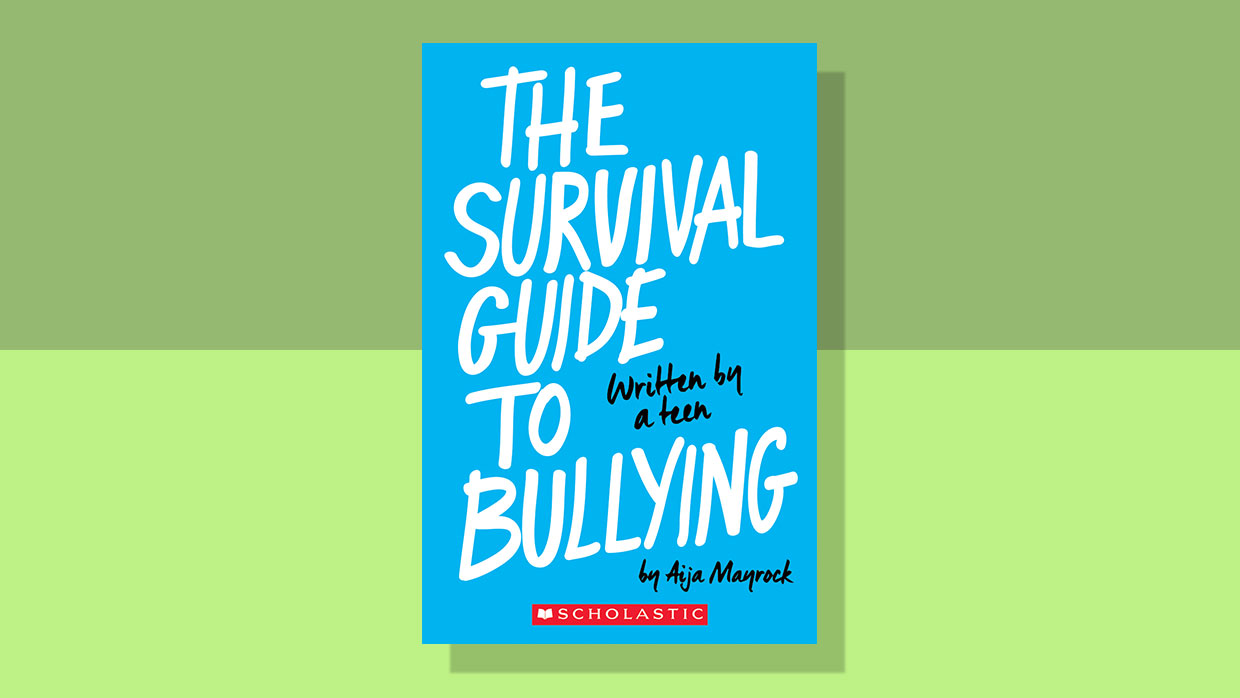- Increase awareness and empathy in the classroom;
- Expand student vocabulary;
- Model fluent reading;
- But most importantly, bring the class together for thoughtful conversations on important topics.
There’s no question that reading aloud is an effective way for teachers to engage young students in literacy and language. But older students often benefit just as much as their younger counterparts and experience many of the same advantages. With upper elementary and middle school students, reading aloud is a great way to:
When reading aloud to older students, it’s important for teachers to choose a book with substance that students can both relate to and will thoroughly enjoy. Books such as The Survival Guide to Bullying by Aija Mayrock, are a great place to start since they complement social and emotional learning curriculums that are so valuable to building community both inside and outside the classroom.
Engaging students in conversation
Teachers should expect a lively discussion when reading The Survival Guide to Bullying to students. The book covers important topics, such as cyberbullying and how to overcome fear, and is structured with rap poems, survival tips, and personal stories that are sure to inspire conversation. So it’s important to set aside class time for these discussions to fully develop.
It’s also helpful for teachers to have a few discussion prompts and activities planned out in advance to guide the conversation. Here are a few that will definitely inspire thoughtful dialogue:
1. Help students define the problem.
Ask students to consider the definition of bullying on pages 14 and 15—that bullying is aggressive behavior that is repeated, or has the potential to be repeated, over time and is done in the context of a power imbalance. Do students agree with how bullying is defined here? How would they define bullying in your classroom, school, or community?
2. Create a story collage.
Encourage students to write down an example of bullying they have witnessed or heard about on a sticky note. Remind them to keep things confidential and not to include real names. Cluster the sticky notes under headings listing different types of bullying (verbal, social, physical, cyberbullying) to help paint a portrait of the bullying they’ve witnessed or experienced.
3. Pinpoint other places where students experience bullying.
Where else is bullying defined in your school and community? Encourage students to look for other definitions of bullying to compare to the book’s definition. These could include your state’s anti-bullying laws, school policies, posters and flyers, and media reports. How do these definitions differ from the definition in the book? What does it mean for definitions of bullying to vary?
4. Promote understanding.
Consider the list of characteristics Aija suggests that kids have been bullied about on page 23. Ask students to reflect on why kids in their school and community get bullied. Are there characteristics missing from this list? Ask students to consider what they can do to help promote understanding of differences.
5. Partner Profiles
Ask students to split into teams of two. Have each interview the other and identify ways in which they are the same (e.g., same hair color, same religion, same taste in music) and ways in which they are different. Have each student create a profile of their partner stressing the ways in which their partner is unique.
6. Make safe spaces.
In Chapter 6, Aija mentions several “hot spots” where bullying is likely to occur at school. Are these the same hot spots that exist in your school? What are some ways to make hot spots safer for all students?
Reading aloud is a great way to talk to you students about sensitive topics that are relevant and important to them. And these are just a few questions and activities you can use to inspire memorable discussions that will benefit your students for years to come.
